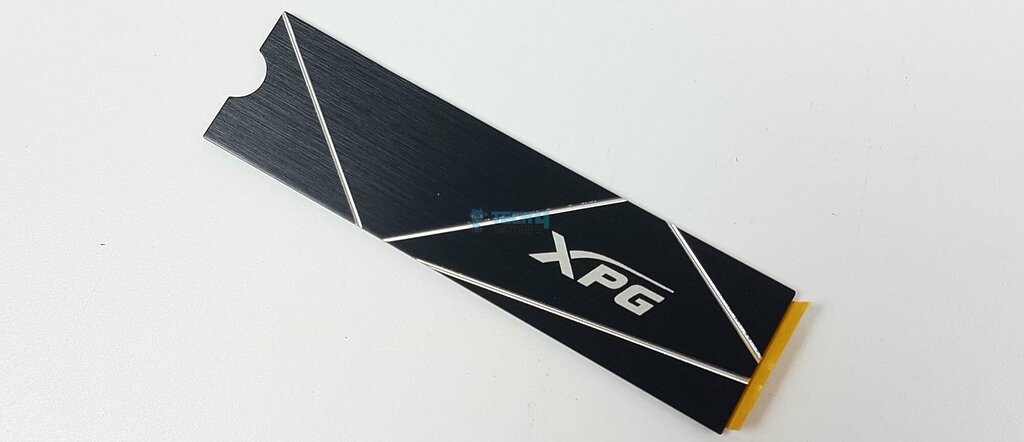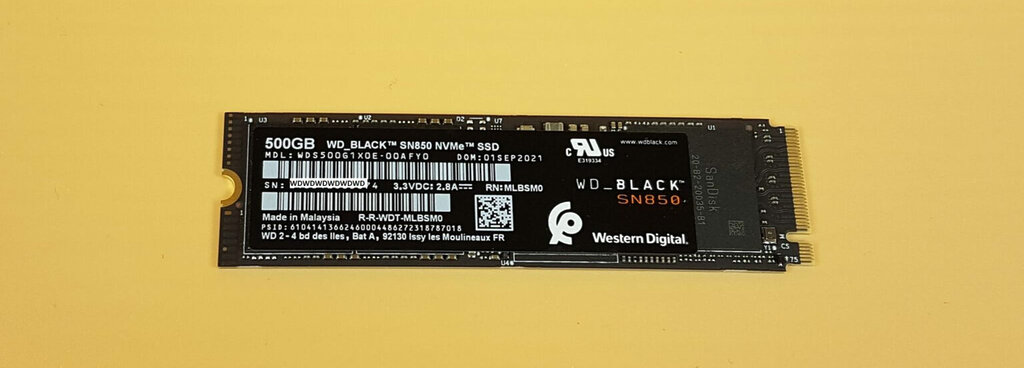SSDs have gained massive popularity in the past decade or so, replacing mechanical hard drives to become the primary storage of many users. But, despite being more durable, SSDs have one flaw that is often overlooked: their lifespan is much more limited than that of hard drives[1]. That’s what SSD endurance is all about, and it is one of the key factors to look for when buying an SSD; let’s dive into more detail.
Key Takeaways
- SSD endurance is a measure of the lifespan of an SSD and is determined by the number of P/E (Program/Erase) cycles its cells can endure.
- This lifespan depends on its TBW (Terabytes Written) and DWPD (Data Writes per Day) ratings. TBW measures how many terabytes of data can be written and erased before damage can occur. DWPD is the amount of data that can be written per day within the drive’s warranty period.
- SSD endurance is a very important factor to remember when purchasing SSDs. It enables you to safely back up your data and replace the drive before failure occurs.
- Solid-state drives employ many built-in mechanisms to improve the SSD’s lifespan. These include ECC, Wear Leveling, Garbage Collection, Over-Provisioning, and TRIM.
What Is SSD Endurance?
SSD endurance refers to measures that specify the lifespan of a solid-state drive[2]. These measures account for the number of P/E (Program/Erase) cycles the NAND flash memory cells can perform before they start to degrade. These memory cells have a limited lifespan as their transistors start to wear out after a certain number of P/E cycles[3]. Beyond that, their charge-carrying capacity starts to be affected, and the risk of failure and data loss is greatly increased.

The SSD endurance namely depends on the type of cell being used: SLC, MLC, or TLC[4]. SSDs that have more bits per cell have a lower life span:
- SLC NAND Flash: 50000-100000 P/E Cycles
- MLC NAND Flash: 3000-10000 P/E Cycles
- TLC NAND Flash: 300-1000 P/E Cycles
Additionally, it depends on the storage capacity. More storage means more memory blocks for data distribution, increasing endurance.
SSD endurance is measured through two key terms. These are Terabytes Written (TBW) and Data Writes per Day (DWPD).
- TBW: Terabytes Written is the total amount of data in terabytes that can be written to an SSD during its lifetime[5]. For example, the WD Black SN850 1TB SSD has a TBW rating of 1200 TBW. This means that 1200 terabytes of data can be safely written to it before any chance of failure arises.
- DWPD: Data writes per day is a measure of the amount of data that can be written to the drive per day during the course of the warranty[6]. A 1TB drive having a rating of one DWPD means one terabyte of data can be written to it every day during the warranty period.
Converting TBW To DWPD And Vice Versa
To convert TBW to DWPD, use the following formula:
TBW * 1000 / Warranty (in Days) * Capacity (in GB) * 365
For example, consider a drive with a 500GB capacity, a TBW rating of 300, and a five-year warranty period (1825 days). Adding the values to the formula, we get a DWPD rating of 0.328 TB. So, approximately 328 GB of data can be written to the drive every day for 5 years.
As for the DWPD to TBW conversion, here’s the formula you have to use:
TBW * Capacity (in GB) * Warranty (in Days) * 365 / 1000
Using the same scenario, the DWPD comes out to 299.3.
Does SSD Endurance Matter?

SSD endurance is a very important specification to keep in mind before purchasing the drive. It allows you to determine the lifespan of your SSD before the risk of failure becomes critical. This is important because, unlike hard drives, SSDs don’t display any indication of damage (like buzzing, clicking noise, etc.)
Knowing how long your SSD will last enables you to back up your data and keep a new drive ready to go in case of failure. This will help you save plenty of time and, potentially, money.
Measures For Improving SSD Endurance
Fortunately, SSD manufacturers take several measures to prolong their endurance ratings.
- ECC: Used by NAND SSDs, ECC (Error Correction Code) detects and corrects bit errors, preventing data corruption.
- Wear Leveling: It efficiently distributes the P/E cycles over the memory blocks to improve overall lifespan.
- Garbage Collection: Frees up blocks that contain invalid data for new data to be written, reducing the number of P/E cycles. It works in conjunction with Over-Provisioning and TRIM.
- Over-Provisioning: Over-provisioning provides extra memory blocks for valid data to be written into during garbage collection.
- TRIM: Notifies the operating system (OS) that files are being deleted from a block and that new data can be written into it.
Related Helpful Resources By Tech4Gamers:
References:
- N-Able. Lifespan of Solid-State Drives. Retrieved from https://www.n-able.com/blog/ssd-lifespan
- Alan R. Olson & Denis J. Langlois (April 2008). SSD Data Reliability and Lifetime. Retrieved from https://userpages.umbc.edu/~squire/images/ssd1.pdf
- Stephen J. Bigelow & John Moore. Flash memory guide to architecture, types and products. Retrieved from https://www.techtarget.com/searchstorage/Flash-memory-guide-to-architecture-types-and-products?
- Mai Zheng, Joseph Tucek, Feng Qin & Mark Lillibridge. USENIX. Understanding the Robustness of SSDs under Power Fault. Retrieved from https://www.usenix.org/system/files/conference/fast13/fast13-final80.pdf
- Understanding SSD: Solid State Drives. Retrieved from https://wiki.docking.org/index.php/Understanding_SSD:_Solid_State_Drives
- Cosmos Darwin (April 2019). Understanding SSD endurance. Retrieved from https://techcommunity.microsoft.com/t5/storage-at-microsoft/understanding-ssd-endurance-drive-writes-per-day-dwpd-terabytes/ba-p/426024
Frequently Asked Questions
The lifespan of an SSD depends on its Terabytes Written (TBW) and Data Writes per Day (DWPD) ratings. So long as you don’t exceed these ratings, you don’t have to worry about your storage drive failing.
Terabytes Written (TBW) and Data Writes per Day (DWPD) are the most important measures to determine endurance. TBW is how much data can be written and erased from memory cells before they start to wear out. DWPD measures how much data can be written to the drive daily under the warranty period.
SSD endurance is a very important specification to keep in mind before buying these drives. It allows you to roughly predict when your SSD becomes susceptible to failure. This, in turn, can save precious time and money.
Thank you! Please share your positive feedback. 🔋
How could we improve this post? Please Help us. 😔
[Wiki Editor]
Ali Rashid Khan is an avid gamer, hardware enthusiast, photographer, and devoted litterateur with a period of experience spanning more than 14 years. Sporting a specialization with regards to the latest tech in flagship phones, gaming laptops, and top-of-the-line PCs, Ali is known for consistently presenting the most detailed objective perspective on all types of gaming products, ranging from the Best Motherboards, CPU Coolers, RAM kits, GPUs, and PSUs amongst numerous other peripherals. When he’s not busy writing, you’ll find Ali meddling with mechanical keyboards, indulging in vehicular racing, or professionally competing worldwide with fellow mind-sport athletes in Scrabble at an international level. Currently speaking, Ali has completed his A-Level GCEs with plans to go into either Allopathic Medicine or Business Studies, or who knows, perhaps a full-time dedicated technological journalist.
Get In Touch: alirashid@tech4gamers.com


 Threads
Threads

![CPU Cooler Heat Pipes [What, Why, & How]](https://tech4gamers.com/wp-content/uploads/2023/09/HOW-TO-9-218x150.jpg)

![What Is BIOS? [Function And How To Access It] ASRock B650E Steel Legend WiFi - BIOS 1](https://tech4gamers.com/wp-content/uploads/2024/07/ASRock-B650E-Steel-Legend-WiFi-BIOS-1-218x150.jpg)